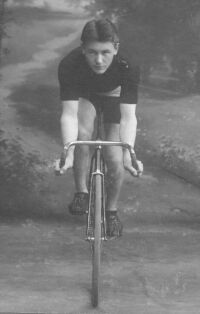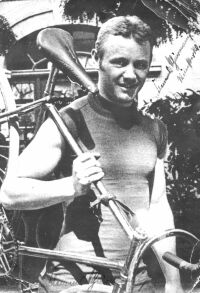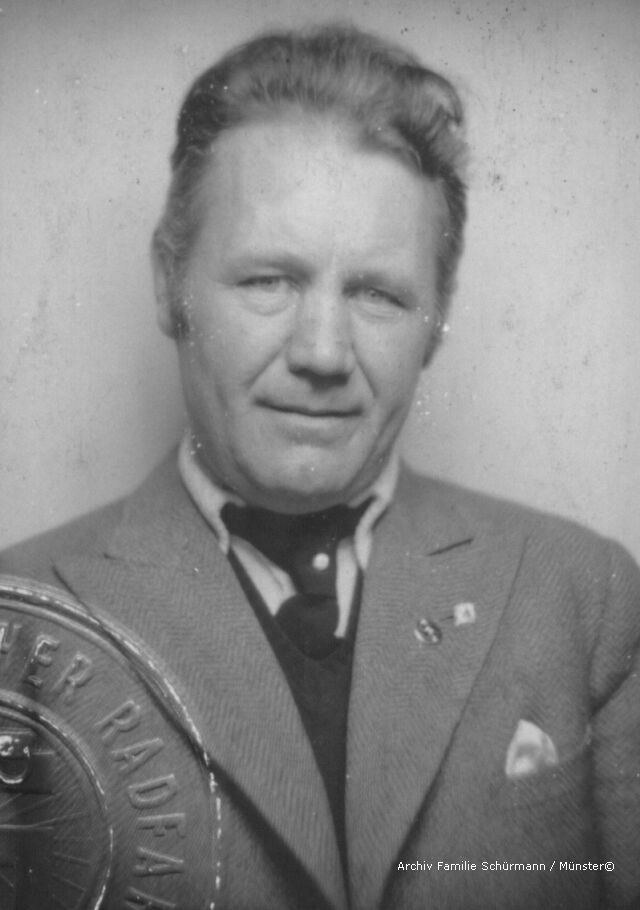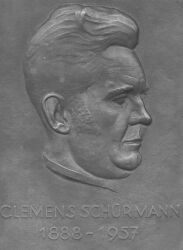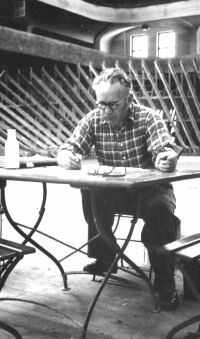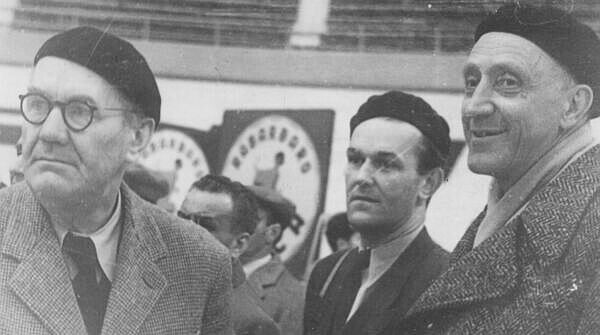|
|
Besides wrestling,.cycling was among the most popular sports in the beginning of the 20th century. When Clemens Schürmann comepeted in his first race in 1905 at the age of 17, he imediately won it and other victories followed. Only a few years later Schürmann became professional and was among the best sprinters of his time. In the year 1908 Schürmann was called to take part in the word-championships representing Germany. During the winter months Clemens
studied to become an architect. He financed his studies by the
prize-money he gained in the comeptions he took part in. When he met his future wife Clara
(Schmitz) she begged him to give up cycling, because from her point of
view it was much too dangerous. Contrary to expectations this wounding should get Clemens back to his beloved sport. His doctor suggested "light pedalling movements" for his knee - in other words: cycling was said to be the best therapy and destiny continued. Clemens was back on the track and he should be focused on cycling tracks for the rest of his life. Sprinters usually did not wear any helmets on cycle-tracks in those days, but Clemens was the first who did it - probably as a concession to his wife Clara's fears. He prepared a from World-War I - steel helmet and covered it with a dark stocking of his wife.This was the proto-type of a cycling-helmet. (see photo and report: The First Cycling_Helmet) After his come-back Clemens
Schürmann gained the peak of his career. He competed with the
world's most famous sprinters, like Walter Ruett, Thorwald Ellegaard,
Jacquelin ans "Major" Taylor. In 1908 Clemens was European
vice-champion in sprint, beaten by Thorwald Ellegaard. In the same year
he beat the French champion Edmond Jaquelin in the fore-runnings
during
the world-championships in Berlin. In 1927 Clemens ended his career, but he should be involved with track-cycling and cycle-tracks for the rest of his life. It was in the year 1925 when Clemens first linked his passion for cycling and his profession as an architect by planning his first cycle-track in Krefeld (Ger). His son Herbert Schürmann was born in the same year. Many, many other tracks should follow all over the
world. The world-famous "Vigorelli"-track in Milano, which Clemens built in 1936, was called "La Pista Magica". The name "magic-track" was a sign of the secrects of his successes: the perfect interaction of practical experience and precise construction. All known records were broken on this famous track. The cycliste were almost led by an invisible beam on the perfect line in and out of the steep curves. It is reported that the cyclists were thrilled and loved to race this track. Many other cyclists should share these experiences by riding their racing-bikes on "Schürmann-tracks" in the following years. Later Clemens Schürmann was
the sport-director of the six-days in in hometown Münster. He was
said to be a very consequent, stict but repected sport-dirctor. Clemens planned a new track in
Krefeld (Ger), - the place of his first track -, when his grandson, my
brother Ralph Clemens Alexander was born. In 1957 - one year after his
grandson Roland [me] was born, my grandfather died. Schürmann-tracks , - now in
the 3rd generation - are still partly influenced and construcetd by my
granddads practical experiences, as the "evolution of cycling-tracks"
goes on. By now there about 120 Schürmann-tracks around the world
and the spirit of the cyclist Clemens Schürmann lives on in all of
them. (see also : http:www.velodromes.com)
|


